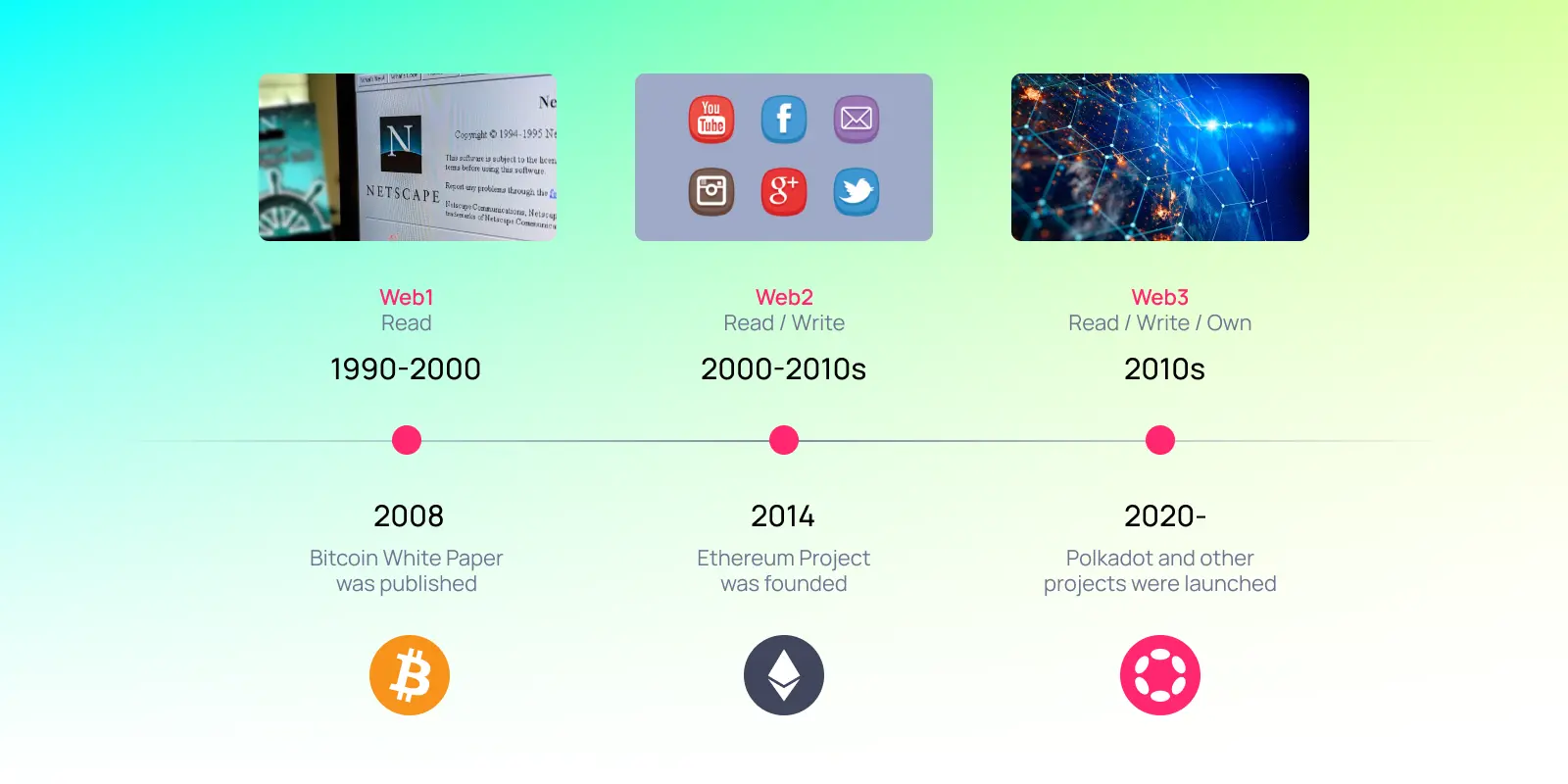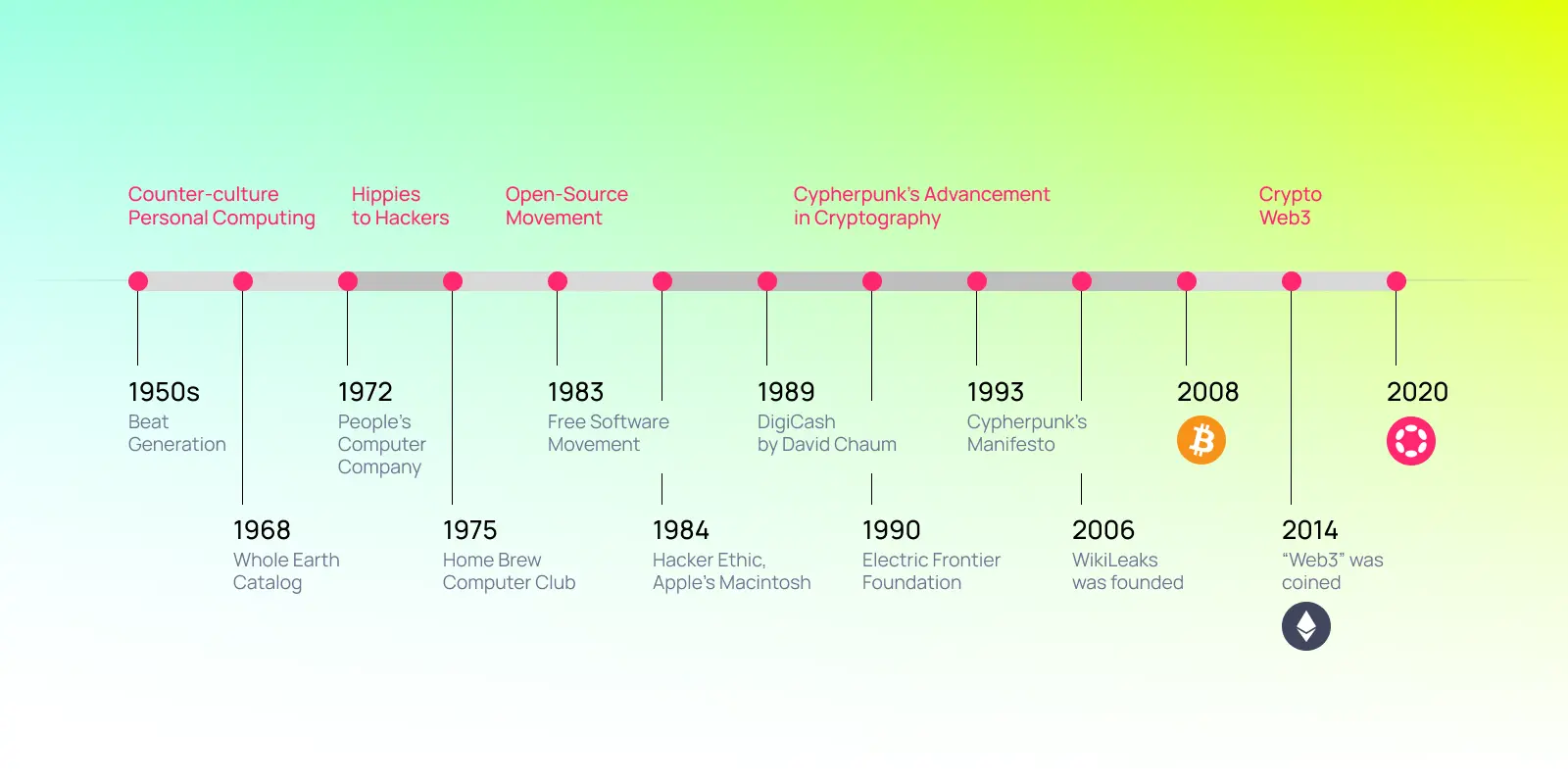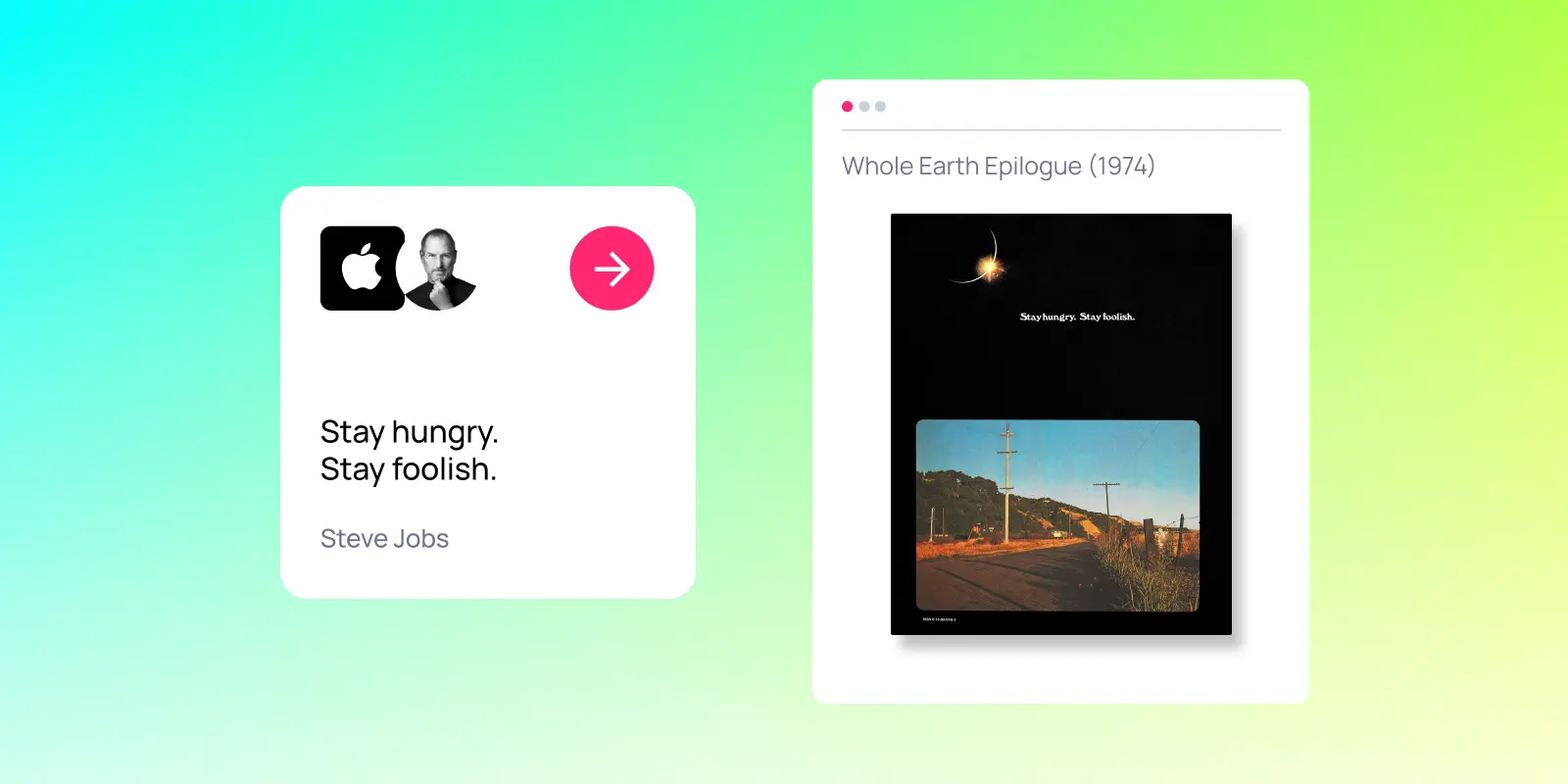Polkadot's Web3 Philosophy: A legacy of digital freedom from Jobs to Wood
Web3 is the next evolution of personal technology and digital freedom. From Steve Jobs and personal computing to Gavin Wood's vision, explore how Web3 vs Web2 represents individual empowerment over corporate control.
 By Yusuke Obinata (Obi)•June 2, 2025
By Yusuke Obinata (Obi)•June 2, 2025
I see the origins of Web3 not in Bitcoin or the rise of the Internet, but in the birth of personal computing. The concept of "Web3," originally articulated by Ethereum and Polkadot founder Gavin Wood when he was Ethereum’s CTO, represents personal technology—enabling individuals to manage their privacy and assets independently, shaping their lives with autonomy and self-determination. This aligns with the philosophical principles that have underpinned personal computing since the 1960s.
Discussions about Web3 often center on the evolution of the internet from the read-only era of Web1, or cryptocurrencies starting from Bitcoin. While both perspectives are valid, neither captures the full picture. The common perception of "Web3" today may only be the tip of a much deeper iceberg.

I believe the foundational philosophy of Web3 began taking shape with the rise of personal computing in the late 1960s. At its core, Web3 is about individual empowerment—allowing users to create and control accounts and wallets without intermediaries (self-sovereignty), interact with strangers without concerns over counterparty risk (verifiability), and directly influence networks according to their own intentions (permissionlessness). The goal is not to control people through technology but to empower them to use it as a tool for independent thought and self-sovereign living. This is the same ethos that was shaped alongside the birth of personal computing, resonating with the countercultural movement from the mid-'60s to the mid-'70s, and later passed on to open-source technology and the rise of the Internet.

There have been a number of technologists with this very vision throughout the evolution of personal computing—long before "Web3" was coined, even when computers were so expensive and few imagined them in every household. Among them, one figure who stands out is Steve Jobs.
Jobs spent his teenage years in the 1960s—a chaotic era. Following rapid economic growth post-World War II, the 1950s became highly standardized, causing many youths in the following decade to feel disappointed by lives dominated by corporations and mass media.
It was during this period that an independent magazine called Whole Earth Catalog became passionately popular among young people including Jobs. Whole Earth adopted "Access to Tools" as its slogan, introducing resources aimed at empowering individuals to think independently and shape their own lives. Long before personal computers and desktop printers became commercially available, the Whole Earth Catalog’s first issue was published in 1968 with typewriters, scissors, and Polaroid cameras. They introduced its purpose:
"So far remotely done power and glory—as via government, big business, formal education, church—has succeeded to the point where gross defects obscure actual gains. In response to this dilemma and to these gains a realm of intimate, personal power is developing—power of the individual to conduct his own education, find his own inspiration, shape his own environment, and share his adventure with whoever is interested. Tools that aid this process are sought and promoted by the WHOLE EARTH CATALOG."
– Stewart Brand, Whole Earth Catalog Fall 1968
Here, one can already see a similar philosophy being rhymed to the current generation of Web3 technology.
As the 1970s began, the path towards widespread adoption of personal computing gradually became clearer. In this context, the People's Computer Company, established in 1972, warned the earliest generation of hackers about the risks of technology being misused as a tool for personal control and domination.
“Computers are mostly used against people instead of for people; used to control people instead of to free them; Time to change all that - we need a... People’s Computer Company.”
– Personal Computer Company Vol.1, Computer History Museum
The now legendary phrase, "Stay hungry, Stay foolish," quoted by Jobs in his Stanford speech, actually originated from the back cover of the Whole Earth Catalog's final edition, 1974. Jobs concluded his speech by explicitly referring to the catalog as one of the formative texts of his generation, demonstrating how deeply he was influenced by it.

Guided by the spirit of "Stay hungry, Stay foolish," Jobs began participating in the Homebrew Computer Club, started in 1975 by a fellow Whole Earth reader. This club represented one of the earliest hacker meetups. Together with Steve Wozniak ("Woz"), Jobs founded Apple the very next year and released their first product, the Apple I. Even the promotional materials for the Apple I reflected a deeply individual-centered philosophy, echoing ideas that would later evolve into the open-source philosophy.
”And since our philosophy is to provide software for our machines free or at minimal cost, you won’t be continually paying for access to this growing software library.” -
Apple I Advertisement on Interface Age magazine, Oct 1976
Eight years after launching Apple's first computer, Jobs introduced the Macintosh in 1984. Clearly demonstrated in its iconic commercial video, Jobs intended to position computers not as "giant monolithic machines" accessible only to the powerful few, but rather as a tool of empowerment for the individual. He positioned Apple as the hope for freedom in the future of personal computing against the giant IBM, which was trying to dominate the market back then.
In the 1980s, alongside the advancement of open-source technology, the Free Software movement, led by Richard Stallman, gained momentum. Stallman advocated strongly for software that granted users fundamental freedoms and control, defining and promoting the concept of "Free Software" separating from “non-free” software.
“Freedom means having control over your own life. If you use a program to carry out activities in your life, your freedom depends on your having control over the program. You deserve to have control over the programs you use, and all the more so when you use them for something important in your life.”
– Richard Stallman, “Free Software Is Even More Important Now - gnu.org”
During this period, the philosophical ideas of computer hackers were explicitly articulated as the "Hacker Ethic", particularly through the publication of the book, Hackers.

This work captured the open-source hacker ethos at that time, characterized by skepticism toward authority and a strong preference for fair and open values.
Hacker Ethics
- Access to computers—and anything that might teach you something about the way the world works—should be unlimited and total. Always yield to the Hands-On Imperative!
- All information should be free.
- Mistrust Authority - Promote Decentralization.
- Hackers should be judged by their acting, not bogus criteria such as degrees, age, race, or position.
- You can create art and beauty on a computer.
- Computers can change your life for the better.
– Steven Levy, “Hackers: Heroes of the Computer Revolution” (1984)
Entering the 1990s, the internet began its widespread growth. However, fearing cybercrime, the United States government implemented excessive regulations, even resulting in secret service raids on the homes of teenage computer enthusiasts and a small gaming company. In response to these actions, the Electronic Frontier Foundation (EFF) was founded to defend freedom of expression and protect the rights of hackers in the digital space. They eventually succeeded in their efforts.
During this same period, the Cypherpunk Manifesto was also published, emphasizing the vital importance of privacy in the digital realm.
“Privacy is necessary for an open society in the electronic age. Privacy is not secrecy. A private matter is something one doesn't want the whole world to know, but a secret matter is something one doesn't want anybody to know. Privacy is the power to selectively reveal oneself to the world.”
“Information does not just want to be free, it longs to be free.”
– Eric Hughes, Cypherpunk’s Manifesto (1993)
These developments fostered the evolution of hacker philosophy, driving steady progress in cryptographic technology that laid the essential groundwork for the Bitcoin Whitepaper, released in 2008. The introduction of a currency system independent of central banks, coinciding with the global financial crisis, was far from accidental. Furthermore, as if echoing Bitcoin's core philosophy, the following years saw WikiLeaks' disclosures and Edward Snowden’s revelations exposing large-scale government surveillance. These events strengthened the convictions of early Bitcoiners, cypherpunks, and hackers, further cementing their vision.
In 2013, Vitalik Buterin, who at the time was a leading writer for Bitcoin Magazine, elevated blockchain—Bitcoin's underlying technology—into the concept of a generalised computing system, Ethereum. Vitalik’s Ethereum White Paper drew significant attention within the Bitcoin community. He then encountered Gavin Wood, a talented engineer and computer scientist. Gavin translated Vitalik's theoretical vision into a concrete, implementable specification known as the Ethereum "Yellow Paper" in 2014. Together, the two and the fellows made Ethereum a reality.

During this period, the term "Web3" was clearly defined by Gavin Wood. This wasn’t just about coining a term but about recognizing that, for the first time in history, both the technology and social environment were in place to build a social infrastructure that advances past movements. In a blog post published in April 2014, Gavin described both the philosophical foundations that led to Web3 and the potential societal benefits it could offer. His conceptualization of Web3 encompassed not merely the evolution of the web, but a far-reaching philosophical vision capable of forming the infrastructure of the digital society as a whole.
“As we move into the future, we find increasing need for a zero-trust interaction system. Even pre-Snowden, we had realised that entrusting our information to arbitrary entities on the internet was fraught with danger. However, post-Snowden the argument plainly falls in the hand of those who believe that large organisations and governments routinely attempt to stretch and overstep their authority. Thus we realise that entrusting our information to organisations in general is a fundamentally broken model.”
“Say 'hello' to Web 3.0, a Secure Social Operating System.”
– Dr. Gavin Wood, “ĐApps: What Web 3.0 Looks Like” (2014)
From Ethereum, through Polkadot, and now to JAM—which is currently undergoing protocol implementation—each project has been developed with a long-term view, deeply rooted in the principles of freedom, a value at the heart of the philosophy of personal computing and Web3. Indeed, I see this as fundamentally aligned with the philosophical ideals of personal computing. If we see the personal computing revolution led by people like Steve Jobs as building computer hardware accessible to the people, perhaps the true Web3 philosophy championed by Gavin Wood and his contemporaries can be understood as a movement dedicated to building a supercomputer accessible for everyone.
It took 8 years for Apple to release the Macintosh, 22 years to the iMac, and 31 years to the birth of the iPhone. One can wonder what kind of future awaits Web3-based ‘supercomputer’ accessible for anyone. Both stories have one common pattern: they have been driven by people committed to long-term vision of technology that is profoundly good for individuals.











